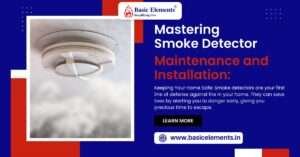Historic theaters present unique fire safety challenges compared to modern venues. Many of these grand old theaters were built in the late 19th or early 20th centuries, long before modern building codes and fire regulations. While beautiful and ornate, their aging construction materials, limited fire suppression systems, and outdated egress routes can pose serious risks in the event of a fire emergency.
Factors such as wood framing, decorative fabrics, and antiquated electrical systems necessitate meticulous fire prevention and response planning. Moreover, the substantial occupancy loads common in live performances underscore the critical need for swift evacuation procedures. In order to ensure the safety of audiences, performers, and staff, operators of historic theaters must possess a thorough understanding of the unique fire hazards associated with these venues and implement suitable safeguards and protocols. Proactive management of fire safety remains imperative, even in structures exempt from current code stipulations.
This article examines key fire safety considerations for historic theaters and provides recommendations to reduce the dangers. With attention to prevention, preparation, training, and vigilance, the splendor and culture of these landmarks can continue to be enjoyed for generations to come.
Fire Safety Considerations Unique Construction Materials
Historic theaters often utilized construction materials that are far more combustible compared to modern buildings. Heavy timber framing using large wood beams and columns was commonly employed in older theaters for both structural and aesthetic purposes. These large solid wood elements can burn robustly once ignited. Additionally, ornamental wooden features and intricate woodwork interiors comprised of smaller dimensional lumber create an abundance of fuel load. During the early 20th century, theaters also began using innovative materials like terra cotta and cast iron. However, these early forms of fireproofing were often not as effective as modern standards. For example, terra cotta tiles were attached to structural steel frames with metal brackets, which can fail in extreme fire conditions. The abundance of wood and other combustible furnishings also contributes to fire spread potential. Overall, the legacy construction materials and methods used in historic theaters can allow fire to spread quickly and make suppression difficult compared to more fire-resistive modern buildings.
Limited Fire Suppression
Theatres built in the late 19th and early 20th centuries often have outdated or limited fire suppression systems. Many historic theaters were constructed before modern sprinkler systems became standard. While some have been retrofitted, the process of installing sprinklers in an older building can be complex and costly.
Restrictions on updating historic buildings also mean fire suppression systems may not be up to modern codes. There are often rules about preserving original materials and facades. Running new piping and equipment could damage decorations or alter a theater’s historic ambiance. Fire officials have to balance safety with historic preservation when evaluating upgrades.
The end result is that vintage theaters can lack adequate sprinklers, smoke detectors, and fire extinguishers. Fire hydrants nearby may also have insufficient water flow and pressure. With outdated and limited fire suppression, a small flame can quickly rage out of control in an old theater. Careful planning for fire safety is essential.
Narrow Exits and Stairways
Historic theaters often have narrow exits and stairways that can create bottlenecks and slow evacuation during a fire emergency. Theatres built in the early 20th century were not designed with modern fire codes in mind. They frequently have insufficient exits and stairwells that are too narrow by today’s standards.
During a crowded event, hundreds of panicked people may be trying to squeeze through the same small exit doors and staircases at once. This can lead to dangerous crowding and stampedes as patrons urgently try to escape. The resulting bottlenecks significantly slow the evacuation process.
People in the back of the theatre have no choice but to wait in huge lines just to reach an exit. Those in front encounter gridlock as multiple streams of people converge on the same escape route. The narrow paths quickly become clogged.
This problem is compounded if smoke and fire spread to the main exits, blocking the only ways out. Patrons fleeing for their lives may have no choice but to try escaping through unconventional side doors and windows. Any delays can prove fatal.
As fires grow rapidly, seconds and minutes matter. Narrow exits and stairways in old theaters can mean the difference between life and death during an emergency evacuation. Looking at creative solutions to expand exit capacity could dramatically improve safety.
Flammable Furnishings
Historic theaters often contain luxurious and ornate furnishings that unfortunately pose a serious fire hazard. The fabrics, curtains, upholstery, and other textiles used in these spaces are frequently made from flammable materials that can rapidly spread flames.
Velvet curtains and drapes are common in historic theaters. While visually striking, velvet is highly flammable. If ignited, velvet burns intensely and can quickly carry fire across an entire curtain or drape. Upholstered seats are also flammable, with older foam cushions and fabrics presenting even greater risks.
The quantity of fabric in a theater multiplies the hazard. Hundreds of yards of fabric hang on walls, drape across ceilings and line balconies. If fire reaches one piece of fabric, it can easily spread to all the rest. The large surface area and close proximity of fabrics allows fire to spread at incredible speed.
These risks are compounded by the fact that many historic theater fabrics are antique and irreplaceable. Special care must be taken to protect them from ignition sources, while also planning for their swift removal in a fire emergency. Upgrading to fire-retardant fabrics can be explored, but may be restricted in landmarks. Overall, the flammable furnishings in historic theaters require vigilant protection and fire safety planning.
Electrical Wiring Issues
Theatres built in the late 19th and early 20th century utilized early electrical wiring systems that often do not meet modern safety standards. Many of these historic theatres have electrical systems with degraded wire insulation and limited capacity compared to modern standards. Upgrading the electrical systems can be challenging due to the need to preserve historic architectural features.
Some key electrical wiring safety issues in historic theatres include:
- Knob and tube wiring that lacks grounding and has degraded insulation over decades of use. This type of old wiring presents a fire hazard.
- Fuses that lack capacity to handle increased electrical loads from modern equipment and appliances. This can lead to blown fuses which are a fire risk.
- Outdated breaker panels that lack capacity and modern safety features like arc fault detection.
- Lack of fireproof coatings and wrappings on wiring that allows flames to spread rapidly through walls and ceilings.
- Damaged or exposed wiring presenting shock and fire risks.
Upgrading the electrical system in a historic theatre requires balancing safety with preservation of historic architecture and décor. Solutions may include localized re-wiring, use of insulation wraps on wiring, replacing fuse boxes with higher capacity breaker panels, and adding capacity and circuits to safely handle modern equipment loads. Periodic inspection by a qualified electrician is also essential to identify and address any electrical fire hazards.
Smoking and Open Flames
Historic theaters were often built at a time when smoking and open flames from candles or gas lamps were common inside public buildings. Many older theaters permitted smoking inside the auditorium or lobby areas. The careless use of matches, cigarettes, cigars, pipes, or other smoking materials presented an obvious fire hazard. Open flames from gas lamps, candles, or other lighting methods also posed risks.
While smoking is now banned inside most public venues, historic theaters may still permit the use of open flames for lighting effects, candles, or other purposes. Special care must be taken to prevent accidental ignition of curtains, furniture, or other flammable materials. Procedures should be in place to ensure all open flames are fully extinguished after use. Staff should closely supervise any permitted use of candles, matches, lighters or other ignition sources. Performers who use pyrotechnics, fire, or chemical smoke effects require permits and should follow rigorous safety protocols.
Overall, the risks from smoking and open flames can be minimized through a strict no smoking policy, limiting open flames to controlled performance purposes, close supervision of any permitted flames, and safely storing/handling any ignition sources like matches or lighters.
Emergency Lighting
Older theaters often have outdated or inadequate emergency lighting systems. Many historic theaters were built before emergency lighting was required by building codes. Some may have basic emergency lights added later, but these are likely dim incandescent bulbs rather than modern LED fixtures.
The biggest issue with emergency lighting in old theaters is dependence on the main electrical system. If power fails, the emergency lights will go out unless there is a backup system in place. Battery-powered exit signs and pathway lighting should be installed. These will continue working during a power outage.
Batteries for emergency lighting also need to be maintained and replaced periodically. Old batteries can fail after a short time. Regular testing of emergency lighting systems is essential. Any bulbs or fixtures that are no longer working must be fixed.
Proper emergency lighting allows safe evacuation in darkness. It marks exit paths clearly. Having backup power for lighting reduces panic and injuries during emergency situations at historic theaters. Installing an updated system with LEDs and batteries ensures it will function as intended.
Fire Alarms
Fire alarms are a crucial life safety system in historic theaters. However, the unique construction and ornate detailing of these venues can present challenges for effective fire alarm design.
A key consideration is sound levels. Fire alarms must be loud enough to notify occupants over ambient noise levels. In a theater with live performances, this requires extra volume to cut through amplifiers and audiences. Alarms should be at least 15 decibels above the normal noise level in the space.
Placement is also important. Alarms must be positioned so sound carries throughout the entire building, including balconies, backstage areas, lobbies, and restrooms. This usually requires a distributed system with multiple devices. It’s recommended to consult an acoustical engineer when designing the layout.
The visual elements of historic theaters can make conventional fire alarm strobes ineffective. Strobe placement should account for ornate plasterwork, draperies, and other decorative features that can obstruct visibility. Using more strobe units at lower intensities can help ensure adequate coverage.
Maintaining audible and visual alarm effectiveness while preserving historic aesthetics requires careful planning. Proper fire alarm design is key to safely evacuating these landmark structures in an emergency. With the right approach, life safety can be enhanced without compromising architectural integrity.
Smoke Control
Historic theaters often have ventilation limitations that can exacerbate smoke buildup during a fire. Many older theaters lack modern HVAC systems and instead rely solely on passive ventilation through open windows or roof vents. While this was acceptable when the theaters were constructed, it poses risks in a fire scenario.
The large enclosed volumes within historic theaters allow smoke to accumulate rapidly. Without mechanical ventilation to exhaust smoke, visibility will quickly decrease as smoke banks down from the ceiling. Narrow hallways and staircases can further trap smoke and prevent it from venting to the exterior.
Older theaters also tend to have complex layouts with multiple levels, wings, and seating areas. This can make smoke control more complicated, as smoke may be confined to certain sections. Curtains, drapes and elaborate decorations provide combustible material and increase smoke production.
Having robust smoke control systems in place is crucial. Installing mechanical ventilation can help prevent smoke from spreading during initial fire stages. Ventilation should be zoned to target key areas like lobbies, corridors and stairs. Passive smoke vents in the roof and openable windows can also assist. Maintaining clear egress paths is essential.
While retrofitting historic theaters with modern smoke control can be challenging, it provides vital protection for occupants during a fire. Consultation with ventilation engineers and life safety experts is recommended to develop effective smoke control plans. With careful planning, historic theaters can take steps to reduce risks from smoke while preserving their architectural integrity.







Comments are closed.